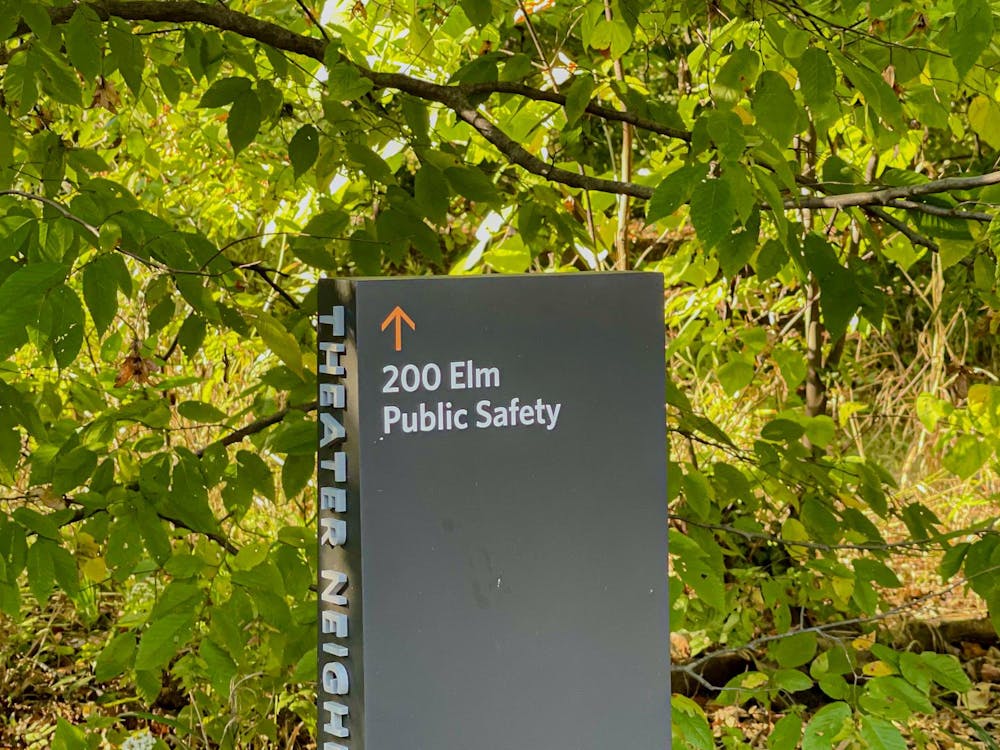Four years after students occupied Nassau Hall to protest what they saw as a weak commitment to Asian-American and Latino studies, the University has fulfilled one of its chief promises to the protesters by hiring Grace Hong, a specialist in Asian-American studies.
Hong taught in the English department at the University of California at San Diego, which she described as "quite different from Princeton."
"I'm hoping to add some permanent courses, to think more in the long term," Hong said of her new position. "It seems that some of these students haven't seen enough developments since the sit-in."
But even with the hiring of Hong, some at the University do not feel that the administration has done all it pledged in the 1995 sit-in.
"It's been four long years and we're just now getting Professor Hong," said Jane Liu '01, chair of the Third World Center governance board. "I don't think the University has committed itself fully. I haven't seen enough results."
Liu, who served on the search committees that hired Hong, said she would like to see the creation of a program in Asian-American studies and more course offerings in that area.
Despite criticisms, Dean of the College Nancy Malkiel said the University has been doing its best to address the protesters' concerns. "It's hard to do a faculty search," she said. "In any search, you need to identify, then persuade a potential candidate — that's true in any field. In a field like Asian-American and Latino studies, where there is a smaller pool of candidates, the competition becomes greater."
Other changes
Other developments that have taken place since the sit-in include the expansion of course offerings in ethnic studies and the introduction of a booklet called "Race, Ethnicity, and Cross-Cultural Encounter," which is distributed by the Dean of the College each year.

In addition, several professors have been hired for the Latin American studies program, including Alejandro Portes, Patricia Fernandez-Kelly and Richard Turtis, who specializes in Caribbean history.
Fernandez-Kelly, who holds a joint appointment with the sociology department, believes that the University is fulfilling the commitment made to the protesters.
"I think they would be happy to find professors to teach in these areas," she said. "One of the problems is that sometimes the qualifications aren't there. You don't want to recruit someone who is not going to be successful. You want to offer students the best qualified instructors."
Liu added that the ad-hoc committee formed after the sit-in to address the protesters' demands — a group of faculty and students led by religion professor Albert Raboteau called the Task Force on Diversity — should not have been just a one-time deal.

"If we want to fulfill what the protesters wanted, we should have an ongoing committee of faculty and students," she said.
But Malkiel said that another committee is not necessarily the answer. "The committee laid out the charter and what we need to do now is follow that charter," she said.
On April 20, 1995, students occupied Nassau Hall, demanding that the University show a greater commitment to Asian-American and Latino studies.
Protesters' demands
Protesters demanded the University hire additional faculty to teach Asian-American and Latino studies, increase its related library holdings, add courses to the curriculum and establish a center for ethnic studies.
Thirty-six hours and eight rounds of discussion later, the sit-in — which drew national attention — ended after negotiations with University administrators produced a pledge signed by then-Provost Stephen Goldfeld.
Included in the document were promises to hire professors to specialize in Asian-American and Latino studies and to accelerate the search for an expert in Caribbean history whose position would be tied to Latino studies.
Alumni and administrators continue to disagree over whether the protesters managed to influence the University.
In an April 22, 1995 letter to The Daily Princetonian, Goldfeld outlined University initiatives that were in progress prior to the sit-in. From the administration's point of view, the discussions during the sit-in did not result in new decisions.
"There were many things in progress already," Malkiel said, "but they weren't made known to the students. Goldfeld's letter clarified what was already in progress."
But student protester April Chou '96, now a graduate student at Stanford, disagrees with Malkiel's statements.
"There wasn't evidence of a written commitment," she said. "The sit-in got things down explicitly and captured them on paper."
Religion professor David Carrasco, a mediator in the sit-in, also believes that the sit-in produced results.
"It wasn't clear to students exactly when or what the administration was doing with ethnic studies," he said. "The sit-in enabled changes to become clear and happen faster."







